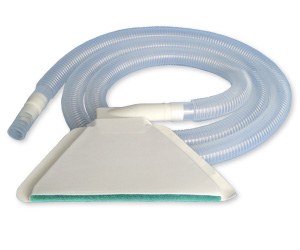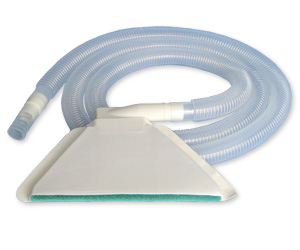
18 Feb From First Sketch to Finished Product
 Designing a surgical device can be simple or difficult, inexpensive or costly. It depends on individual prototyping capabilities or a desire to work with a professional. Before you do either, however, first get a napkin or an envelope and start sketching.
Designing a surgical device can be simple or difficult, inexpensive or costly. It depends on individual prototyping capabilities or a desire to work with a professional. Before you do either, however, first get a napkin or an envelope and start sketching.
In our case, we made our initial design on the back of an Embers Restaurant napkin. The design was low profile, had a central cut-out through which the surgery would be performed allowing the cell foam to surround the incision and would be made out of flexible, non-allergenic, latex-free and fire retardant materials. We then went to a convertor company that bonds layers of material together and shared our thoughts after a Non-Disclosure Agreement was signed and a preliminary patent application filed. The team helped us gain knowledge of what materials and processes would be involved which was invaluable.
Since we knew what the retail price point would likely be for the product, the cost of production (“cost of goods”) was critical. Unfortunately, the quote for a limited number of initial prototypes almost gave me a heart attack. I had to dig deeply into my pockets to get a small “engineering lot” done. You quickly get to understand why medical devices are costly as you factor in the profit margins of your subcontractors as well as your own. At any rate, now it was time to use the prototypes for “clinical trials.’
Wait just a minute; not so fast! First you need to make a choice as to how you can get your product into the operating room. One pathway is through the IRB (Investigational Review Board considered an extension of the FDA) of the hospital or else do an FDA submission of your product for a 510 (k) classification which means your product is similar to other approved products in both form and function. This latter method is best but chances for approval are improved if there is laboratory data to support the validity of the product.
We got our approval quickly within three (3) months since the need was evident (prevent excessive smoke inhalation) and the materials for the prototypes were all 3M medical grade films which had been tested for skin sensitivity and allergic response although skin testing would be repeated later with our finished product. We then used some of the prototypes to do smoke capture studies in a laboratory at Abbott Northwestern Hospital in Minneapolis that indicated excellent capture efficiency and non-flammability that was documented on video and in photographs when air flow rates were 20-25 cubic feet per minute (cfm). Thus, the design was qualitatively validated.
The clinical trials showed effective capture using standard desk-top evacuators even when surgeons decided to alter the product to avoid operating within the cut-out of the plenum. Because the attenuated design was more acceptable to the physicians, we now pursued quantitative testing of the latest iteration now called, “miniSquair,” at a first class air quality laboratory. Below are the three variations tested at the Particle Calibration Laboratory in the Department of Mechanical Engineering at the University of Minnesota in both 2011 and again in 2013 along with the “wand” and the electrosurgical “pencil” where smoke capture efficiencies were determined under identical conditions.
Oh, I almost forgot…what I have just described has taken four (4) years and approximately $2 ½ million ($3 1/2M is average). Our shareholders are both patient and hopeful. Patient because it takes about 5-10 years for a start-up medical device company to achieve profitability and hopeful that the surgical community will embrace out product and the reasons for its use.
I have tried to keep us out of the weeds with this discussion but for those interested in this topic, please call me at 952-345-1112 for a personal discussion. For all you would-be inventors and entrepreneurs, always maintain your courage, optimism and most importantly, your commitment to achieving your goal.
Next we will start talking about the facts and hopefully foster debate on why we need to prioritize smoke evacuation and how best to achieve that end.

